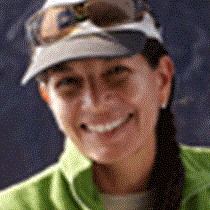Genovesa Island
Our last full day in Galápagos was spent visiting the spectacular northern island of Genovesa, also known by the English name Tower Island, one of the most pristine islands in the archipelago. This was an overwhelming seabird experience. Frigate birds, red-footed boobies, Nazca boobies, and swallow-tailed gulls, as well as storm petrels, tropicbirds, and short-eared owls were everywhere.
Early in the morning after the ship dropped anchor in the bay, a huge submerged caldera of an ancient dormant volcano, we explored the bay by kayaks and then right after breakfast we visited Darwin Bay. At this time of the year this bay holds one of the largest concentrations of nesting frigatebirds and red-footed boobies. Some of them were courting, other building their nests, others incubating their eggs or taking care of their young babies. The place was amazing—it looked almost like a Christmas tree with the male Great frigatebirds with their red, balloon-like gular sacs inflated among the green vegetation as they tried to seduce one of the many females flying over them.
After the walk, and hundreds of pictures (each one better that the other) we had the chance to swim on the landing beach or snorkel in the nearby shallows. Those who choose the deep-water snorkel were rewarded as we encounter scalloped hammerheads as well as large schools of golden rays and mobulas.
In the afternoon we reached the steep walls of Darwin Bay to explore a site known as Prince Philip's Steps, named after the Duke of Edinburgh, who visited Genovesa in 1960. The trail leads you along a steep narrow fissure to the cliff top and then through a palo santo forest, passing nesting boobies and frigatebirds along the way to a storm petrel colony, located at the outside border of the caldera, where we had the chance to see some short-eared owls and a magnificent view of the volcanic cliff. Those who did not want to take the walk were also spoiled as they went for a Zodiac ride along the cliff walls, while others enjoyed their last afternoon on the islands by kayaking under a spectacular sunset.




